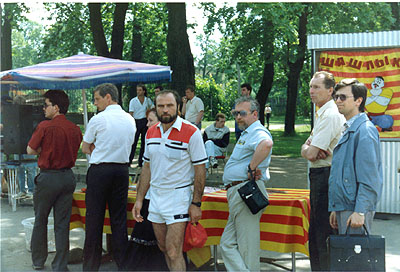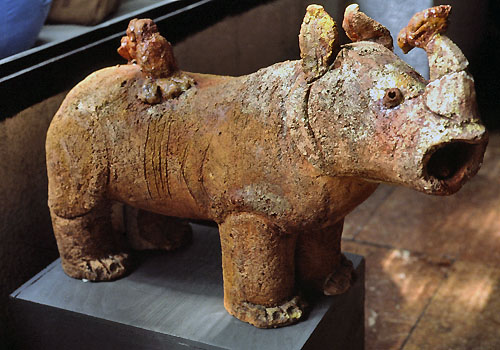
I still recall sitting on a cruise barge on the Dnieper River sailing by Kiev with these guys sipping warm, very large cans of piva (beer)--Yes, the same river into which all the contaminants of the Chernobyl accident flowed--The guy, who in the photo is looking right at my camera, then proceeded to explain that we were all brothers; the Vikings had gone west (into Europe) and the Varangians had gone east (into Russia), but they were both the same so that we were all related. We were all brothers; no need for international rivalries, misunderstandings or stupid hatreds. Lending support for this historical theory was the fact that he was the spitting image of my cousin Mike.
So studying Russian history can be fun, but Russia has had a tough go of it in the twentieth century; not sure what lies ahead, although the near future does not look promising for the Russian people.

Exhibit in the Armenian Museum of Contemporary Art
Well, you might ask, what is this "pig" doing on my closing remarks page? As I was designing the course and figuring out which images to use on which pages and how to layout the individual pages, I kept running into this image from the Armenian Museum of Contemporary Art. It seemed as though I just could not escape it, and it seemed an even bigger shame not to be able to use the image somewhere in the course. So here it is. Even though Armenia is no longer part of "Russia," I decided to include this on my conclusion page. Somehow, it just seemed fitting to the Russian experience.
- Check some selected resources (both book and web) that we recommend to anyone interested in Russian history and culture.
- To follow current events in Russia, check: The St. Petersburg Times, Nezavisimaia Gazeta (in Russian) or Pravda.